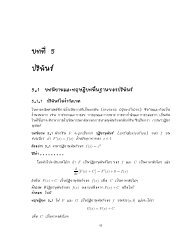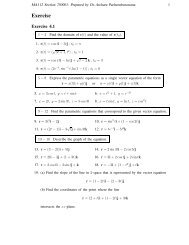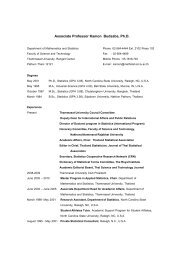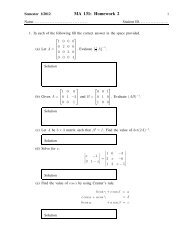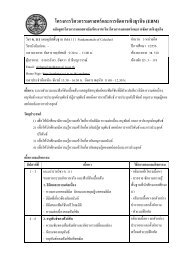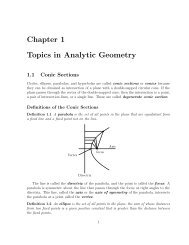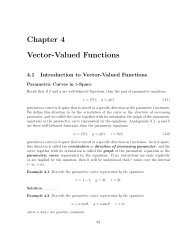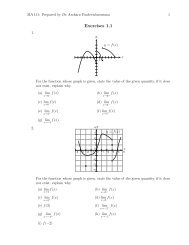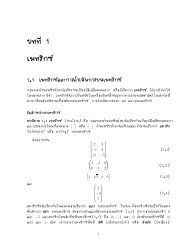Chapter 1 Topics in Analytic Geometry
Chapter 1 Topics in Analytic Geometry
Chapter 1 Topics in Analytic Geometry
You also want an ePaper? Increase the reach of your titles
YUMPU automatically turns print PDFs into web optimized ePapers that Google loves.
MA112 Section 750001: Prepared by Dr.Archara Pacheenburawana 6Because P and Q both lie on the ellipse, the sum of the distances from each of them to thefoci must be equal. Thus, we obta<strong>in</strong>from which it follows thator equivalently2 √ b 2 +c 2 = (a−c)+(a+c)a = √ b 2 +c 2 (1.5)c = √ a 2 −b 2 (1.6)From (1.5), the distance from the focus to an end of the m<strong>in</strong>or axis is a, which implied thatall po<strong>in</strong>ts on the ellipse the sum of the distance to the foci is 2a.The equation of an ellipse is simplest if the center of the ellipse is at the orig<strong>in</strong> and thefoci are on the x-axis or y-axis. The two possible such orientations are shown <strong>in</strong> Figurebelow. These are called the standard positions of an ellipse, and the result equationsare called the standard equations of an ellipse.•−a(−c,0)Orientationyb•(c,0)axStandard Equationx 2a 2 + y2b 2 = 1−bya•(0,c)−bbxx 2b 2 + y2a 2 = 1•(0,−c)−aTo illustrate how the equations <strong>in</strong> the above Figure are obta<strong>in</strong>ed, we will derive theequation for the ellipse with the foci on the x-axis.



